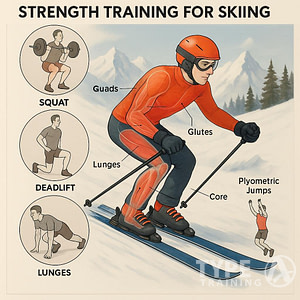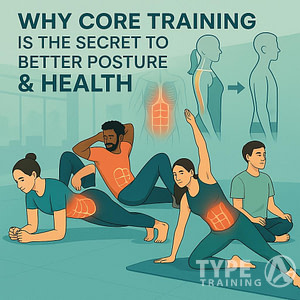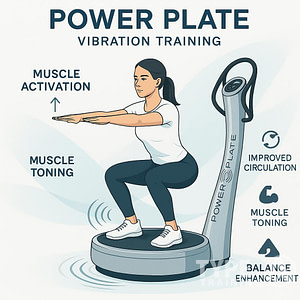Getting your child interested in running can be fun—and honestly, pretty rewarding for both of you. This kids running guide helps whether your child wants to join a school team or just get outside and move, as running helps build strong bodies and healthier habits.
Start with short, easy runs a couple times a week, and stick to simple safety tips from our kids running guide. That way, your child can enjoy running and stay safe from injury while developing a lifelong love of physical activity.
You don’t need to be a coach or marathon runner to help your child get started. A few basics—like
Popular posts:
If you want more tips or a step-by-step guide, check out The Ultimate Running Guide to Help Parents Start Their Kids Running.
Key Takeaways
- Start slow with safe routines and the right gear.
- Keep running fun and pay attention to your child’s needs.
- Learn how to prevent injuries and support healthy habits.
Benefits of Running for Kids
Running gives your child more than just a workout. It shapes their body, helps their mind grow, and sets up healthy habits for life.
Physical Health Advantages
Running builds strong muscles and bones. It keeps your child’s heart and lungs working well by getting their body moving at a steady or quick pace.
Kids who run are less likely to gain too much weight, and they’re at a lower risk for things like type 2 diabetes. This kind of exercise also helps with balance and motor skills.
Young runners can get faster and more coordinated. They might feel more energetic and less wiped out during the day.
Stronger bodies mean fewer injuries when kids play other sports at school. Over time, running teaches the body to handle more activity safely. For details, check this running guide for parents.
Mental and Emotional Wellbeing
Running helps your child feel better mentally and emotionally. It’s linked to sharper memory, better learning, and improved focus in school.
Exercise also calms anxiety and eases stress. Kids who run often sleep better and have steadier moods, which makes it easier to handle daily stuff.
Hitting running goals gives kids a confidence boost. Being part of a running group or event helps them learn teamwork and make friends.
These social perks encourage kids to stay motivated and bounce back from setbacks. You can read more about these mental benefits in this guide for getting kids into running.
Developing Healthy Habits
Running teaches kids how practice and goal-setting matter. They see that effort leads to progress, not just in sports but everywhere.
Making running part of your family’s routine encourages lifelong healthy habits. Kids who get used to exercise early usually stay active as they get older.
When you run with your child—or just cheer them on—you’re showing them what a healthy lifestyle looks like. Running together can strengthen your bond, too.
It helps your child see exercise as fun and important, which shapes habits that can last. If you’re curious about how running habits grow in families, check out this parental running habits article.
How to Get Started with Kids Running
Kids can benefit from running if you help them start safely. Think about your child’s ability, set small goals, and pick routines that fit their age and interests.
Assessing Readiness
Before your child starts running, check if they’re ready. Look at their interest in being active.
Notice if they enjoy moving, playing outside, or being active with friends. Watch for any health issues, like asthma or joint pain, that could make running risky.
If you’re not sure, ask your child’s doctor about their fitness for running. Encourage your child to tell you if they feel pain or get too tired.
Teach them to listen to their bodies and rest or take a walk break when they need it, like Marathon Kids suggests.
Setting Realistic Goals
Set clear, easy goals to keep kids excited. Start with simple things, like running for a few minutes or finishing a short route.
Use a chart or notebook to track progress and celebrate small wins. Focus on getting better, not just beating others.
If your child can jog for a minute, try going for two next time. Clubs or park programs can offer structure and motivation, as seen in these women’s running tips.
Praise effort, not just results. Let your child know that moving and having fun matters more than coming in first.
Age-Appropriate Approaches
Young runners need routines that fit their age and attention span. Kids ages five to seven should have short runs with lots of breaks.
Make it playful—try races, games, or even running to music. Preteens can handle longer distances and might want to join a team or club.
Check that their
Sample schedules, like the one in A Kid’s Training Guide, use run-and-walk intervals to keep things safe and fun. Watch for signs of fatigue or stress, and always let kids take breaks when needed.
Choosing the Right Running Shoes and Gear
Picking the right shoes and clothes keeps running safe and fun. Good gear supports healthy movement and helps your child stay active without the usual aches.
Selecting Proper Footwear
The right running
Have your child stand up and press your thumb sideways at the tip; there should be about a half to a full thumbnail of space in front of the toes. Feet swell later in the day, so check fit then if possible.
Look for
Pick
For more help, check this kids’ running shoe guide.
- Key features to look for:
- Breathable upper material
- Proper arch support
- Light, flexible soles
- Secure closure (laces or straps)
Appropriate Clothing for Comfort
Have your child wear clothes that fit well and keep them cool and dry. Go for shorts, shirts, and socks made from moisture-wicking fabrics.
Cotton can chafe when it gets wet, so athletic materials work better for regular running. If it’s cold, layer up with a light jacket or pullover that’s easy to take off.
Hats or visors keep the sun off their face on hot days. In cooler weather, cover ears and hands with a lightweight hat and gloves.
Bright colors or reflective strips help drivers see your child if they’re running near streets. Well-fitted gear lets your child move freely and comfortably.
Creating a Safe Running Environment
Safety comes first if you want your child to enjoy running. Paying attention to supervision, route choices, and weather keeps your child comfortable and helps prevent injuries.
Supervision and Route Planning
Always supervise young kids when they run. Stay close, especially for children under 12.
Pick routes that are flat, smooth, and away from busy roads or tripping hazards like tree roots and holes. Parks, trails, or local tracks usually work best.
Teach your child to stop at crosswalks and look both ways before crossing. Running in daylight or well-lit areas helps everyone stay aware.
Bring a cellphone in case of emergencies. Let someone know where you’re going and when you’ll be back.
Running with a buddy or group adds safety and fun—something many kids’ running programs recommend.
Sun and Weather Precautions
Check the weather before heading out. Dress your child in layers if it’s cool and use lightweight, breathable clothes when it’s warm.
Bright or reflective clothing helps your child stay visible, especially near roads. Apply sunscreen with SPF 30 or higher, even if it’s cloudy.
Protect your child’s eyes and face with a hat or sunglasses. Try to avoid running during the hottest part of the day—early mornings or late afternoons are usually safer.
If it’s rainy, make sure
Check out these running safety tips to keep things positive and reduce the risk of injuries.
Injury Prevention for Young Runners
Young athletes face unique risks when they start running. Spotting injuries early can protect your child from bigger problems down the road.
Recognizing Common Running Injuries
Kids often get hurt from doing too much, too fast. Overuse injuries like shin splints, stress fractures, knee pain, and muscle strains show up pretty often.
Poor stretching, running on hard surfaces, or skipping rest days usually cause these issues. Pay attention if your child complains about pain in their legs, knees, or feet.
Make sure they have good
For more on building safe routines, check out Boston Children’s Hospital’s sports injury prevention page.
Warning Signs to Watch For
Look out for pain that sticks around after rest or changes how your child walks or runs. Swelling, redness, sudden weakness, or limping are all signals to stop and see a doctor.
If pain starts during normal activity or keeps your child from sleeping, act quickly. Listen if your child says running makes the pain worse.
Kids shouldn’t hide pain just to keep up with friends—let them know it’s okay to speak up. See the 10 tips for preventing sports injuries in kids for some extra help.
Warm-Up, Stretching, and Cool Down
If you help your child prep for running, you’ll keep them safer and make workouts more fun. Every run should start with a warm-up, include some stretching, and end with a cool down.
Effective Warm-Up Exercises
A good warm-up gets your child’s heart beating faster and muscles warm. Try 5–10 minutes of light jogging or brisk walking to get things going.
Dynamic moves like high knees, butt kicks, arm circles, and side shuffles work well for kids. Skipping or jumping jacks can make things more playful.
For more ideas, check out these warm-up activities for kids. The main thing? Keep it fun and keep them moving.
Stretching Routines for Kids
Stretching matters before and after running. Before a run, focus on dynamic stretching—that means moving as you stretch.
Try walking lunges, leg swings, and arm swings. These help loosen up muscles safely.
After running, stretch the main groups: quads, hamstrings, calves, and hip flexors. Hold each stretch for 15–30 seconds, aiming for a gentle pull, not pain.
Remind your child not to bounce while stretching. Keep movements smooth and steady instead. For more tips, see ideas on stretching before and after a run.
Cool Down Best Practices
Cool downs help your child’s body return to normal. Start with 5 minutes of easy walking or slow jogging to slow the heart rate.
Follow with static stretching, focusing on the muscles used during the run. Encourage your child to relax and breathe deeply as they stretch.
Consistent cool downs help muscles recover faster. Cooling down can also be a nice time to reflect and feel good about the effort.
Want more on this? Here’s why cool downs are important for building healthy habits.
Complementary Activities for Better Performance
Kids really benefit from more than just running. Mixing in strength exercises and cross-training keeps things interesting and helps prevent injuries.
Strength Training for Kids
Strength training helps young runners build muscle, improve balance, and support healthy joints. Start with simple bodyweight moves like squats, push-ups, and lunges.
Try making workouts into games or friendly challenges. Use resistance bands or light weights only if your child has good form, and skip heavy lifting for now.
Aim for two or three sessions a week, with 1–2 sets of 10–15 reps per exercise. Focus on good technique and allow rest between sessions.
Besides physical benefits, strength training can boost confidence and help with proper running form. For more tips on warm-up games and cool-downs, check out this kids’ running guide.
Cross-Training Ideas
Cross-training gives kids a break from running and works different muscles, lowering the risk of overuse injuries. Activities like cycling, swimming, and soccer help build endurance, coordination, and flexibility.
Pick cross-training based on what your child enjoys. Try dance, martial arts, or hiking to keep things fresh and fun.
A simple plan might include two running days and two cross-training days each week. Don’t forget stretching or yoga for flexibility, too.
Want more ideas? Check out this guide to getting kids into running.
Understanding and Managing Running Injuries in Girls and Women
Girls and women can face a higher risk for certain running injuries because of anatomy, hormones, and nutrition. Common injuries include knee pain, stress fractures, IT band issues, hip pain, and plantar fasciitis.
Wider hips, lower bone density, and hormone changes affect joints and muscles, making injuries like runner’s knee, stress fractures, and hip pain more likely.
Common injury symptoms:
- Pain during or after running
- Swelling or stiffness in joints
- Soreness that lingers for days
To help reduce injury risk, try these tips:
- Strengthen your core and hips with planks and squats.
- Wear
shoes that fit your foot type and give good support. - Eat foods high in calcium and vitamin D for strong bones.
- Increase running distance and speed slowly—about 10% each week.
- Rest if you feel pain, and talk to a doctor or physical therapist if you’re unsure.
Physical therapists encourage girls who run to focus on balance, muscle strength, and good form. Preventing running injuries in young runners helps build healthy habits early.
If you notice ongoing pain, changes in your period, or trouble staying healthy, talk with a provider who understands women’s needs. Getting the right support early makes running safer and way more enjoyable.
Frequently Asked Questions
Children’s running needs change a lot as they grow. Each age group benefits from different approaches, so safety, skill-building, and good training matter for a positive experience.
At what age is it appropriate for children to start a structured running program?
Most kids can start running in a playful, unstructured way at any age. For structured running programs, experts suggest waiting until age 7 or 8.
By then, kids can follow instructions better and pay attention for longer. The goal shouldn’t be speed or distance—just enjoying movement.
How can parents encourage their children to run without causing injury or burnout?
Encourage running a few times a week, mixing hard and easy days, and always include rest days. Don’t pressure your child to hit certain distances or times.
If your child feels tired or sore, let them rest. Teach them to listen to their body and focus on having fun first.
What are the essential running skills that children should learn when starting out?
Kids should learn basic running form, like keeping their head up and swinging arms naturally. Start with good posture and simple stretching.
Warm-ups and cool-downs matter at any age. Make sure they drink enough water before and after runs, too.
How should a beginner running plan be adapted for children of various age groups?
Younger kids really do best with short runs and plenty of breaks. Use their age as a rough guide—so a seven-year-old might run for about seven minutes at a time.
A ten-year-old? Let them try ten minutes in a stretch. If you want more details, this rule of thumb pops up in the article on jogging with children.
Older kids, especially pre-teens and teens, can try longer distances. They’re usually ready for a bit more structure, but let’s not push them into overtraining.
Can young children participate in 5k races, and what preparations are needed?
Little kids can join 5k races, sure—but only if they’re up for it and honestly want to give it a shot. Build their endurance slowly and keep the training fun, maybe with some relaxed runs together.
Don’t stress about pace or speed at this age. It’s way more important to check with the race organizer about age limits, and make sure your child runs at a pace that feels good for them.
Hydration matters, and honestly, so does a lot of encouragement. Sometimes just cheering them on makes all the difference.
What resources are available for finding a youth running program in my area?
You could start by asking at your local community center, school, or YMCA. They usually know about youth running programs nearby.
Plenty of non-profits organize activities too, like the ones you’ll see on Marathon Kids. Sometimes, it just takes a quick conversation to learn what’s out there.
Some running shoe stores and parks departments sponsor group runs or even youth teams. Try checking their websites, or just drop by and ask the staff if they know about any programs for kids.
















